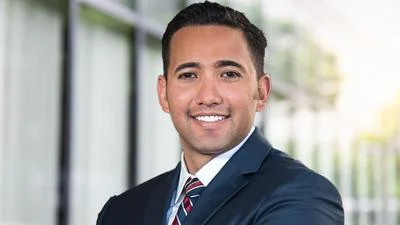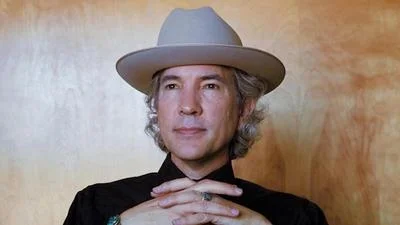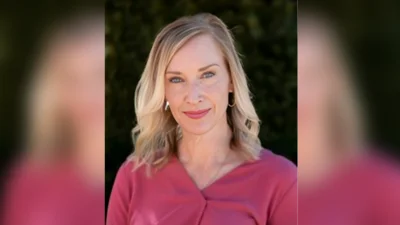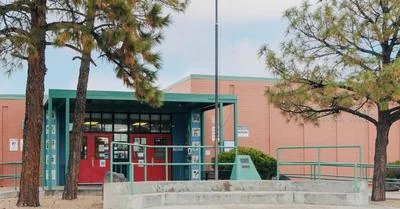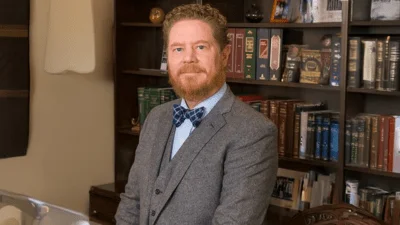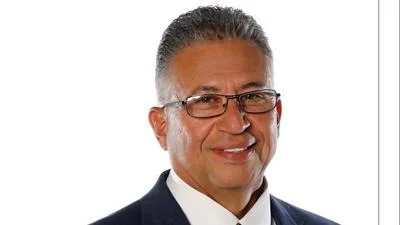In the midst of his campaign for a second term, Santa Fe Mayor Alan Webber is under fire over his part in the destruction of the 152-year-old obelisk in the city's plaza last October.
Webber and the city are facing litigation over the destruction and the mayor is being roundly criticized on a number of fronts. Former Republican candidate to represent New Mexico's First Congressional District and vocal political commentator Brett Kokinadis is perhaps the Democratic mayor's harshest critic.
"Webber is critical race theory in action," Kokinadis said in a July 2 Facebook post. "Hey hey, ho ho, Mayor Alan Webber has got to go."
Webber has been mayor of Santa Fe since his election in 2018 and is seeking a second term in November. Webber's challengers are unsuccessful U.S. House candidate Alexis Martinez Johnson and City Councilor JoAnne Vigil Coppler.
Kokinadis ran in last year's Republican primary for the New Mexico Dist. 1 seat in the U.S. House and came in well behind winner Michelle Garcia Holmes. Holmes was defeated in November's General Election by incumbent Democrat Debra Haaland, who subsequently left the House to become the Biden administration's Secretary of the Interior.
Melanie Ann Stansbury was elected to take over the seat in a special election earlier this month.
On Oct. 12, Native Peoples activists and their supporters tore down the 152-year-old, 33-foot stone cenotaph, made up of an obelisk and plinth, in Santa Fe Plaza on Indigenous Peoples Day, which others refer to as "Columbus Day." The activists long had taken issue with the obelisk, constructed in 1867 and 1868, because it was dedicated to militia "heroes" killed in battle with "savage Indians."
Webber's name has figured prominently in how First Judicial District Attorney Mary Carmack-Altwies handled the subsequent charges against some of the obelisk's destroyers. Most of the rioters received no jail sentences, in part thanks to Carmack-Altwies' push for "restorative justice."
In her widely republished op-ed piece in May, Carmack-Altwies explained why her office reached an agreement with almost all of the defendants that they participate in a pre-prosecution diversion program, including community service, with a goal less about justice and more to do with community reconciliation.
"Restorative justice does not mean the obelisk defendants are getting off with just a 'slap on the wrist,' as has been implied in some venues," Carmack-Altwies wrote in her op-ed. "The defendants are court-ordered to participate in this rigorous program and must face the consequences of their actions on a community stage. The charges have not been dismissed."
The First Judicial District includes Santa Fe, Los Alamos and Rio Arriba Counties.
Kokinadis, in a May 26 Facebook post, sided with former City Councilor Ron Trujillo, who told the Santa Fe New Mexican that Carmack-Altwies' restorative justice for the October rioters was "a crock of crap."
"Mayor Alan Webber and the progressives' agenda for cultural cleansing is a crock of crap, Mr. Trujillo, well said," Kokinadis said in his May Facebook post. "This is not New Mexican and is not for New Mexico. People should be held accountable."
Last month, the group Union Protectiva de Santa Fe filed suit against the mayor and city to get the obelisk returned to Sante Fe Plaza.
In a "Ringside Seat" column published July 1 in the New Mexican, Milan Simonich said, "Santa Fe’s shattered obelisk is a towering issue in this November’s city election" and that Webber "can’t avoid the topic, since he let a mob rip apart the 152-year-old Soldiers Monument."
Webber "abetted a criminal element that shared his political base’s distaste for the obelisk," Simonich wrote, dismissing Webber's claim that "he was angered by the mob violence, even though he enabled it.
"As he campaigns for reelection, Webber says the city will begin a reconciliation process 'later this summer' to have 'a long-overdue conversation,'" Simonich concluded. "He ignores that many who cared about Santa Fe initiated and held productive discussions long before he arrived. Webber didn't defuse the threat of violence. He ignited it. Now he has to live with that piece of history as he seeks a second term."

